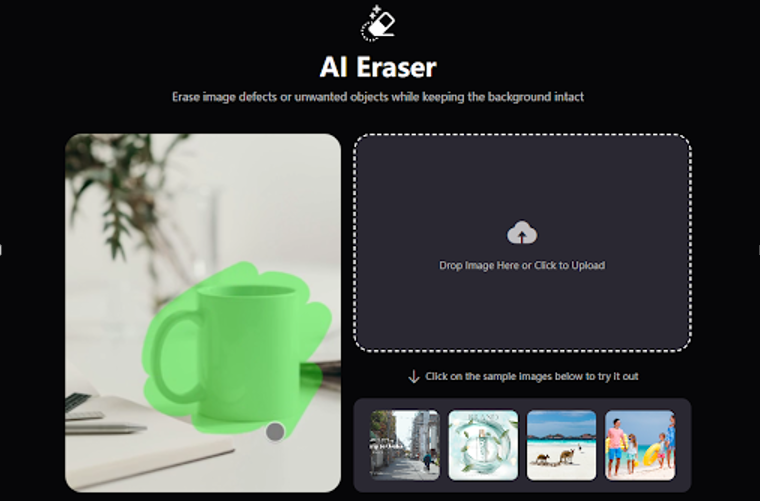Enhancing Product Tracking and Logistics with Tera Barcode Scanners

Manual product tracking in busy distribution centers and logistics networks often leads to costly errors and delays. Locating a specific shipment can become a time-consuming task, impacting overall efficiency. A streamlined system is essential for maintaining a competitive edge in today’s fast-paced supply chain environment.
Barcode technology provides a powerful solution to these challenges. By implementing a robust product tracking system, businesses can achieve real-time visibility and control over their inventory. This article explores how Tera barcode scanners are instrumental in optimizing logistics, ensuring accuracy from the warehouse floor to the final delivery.
The Foundation of Modern Logistics: Barcode-Driven Product Tracking
What is Product Tracking?
Product tracking with barcodes involves assigning a unique scannable code to every item. This barcode contains essential data, such as product identifiers, batch numbers, and origin information. When scanned, it provides instant access to an item’s complete history and current status.
This system allows logistics managers to monitor where each product is, who has handled it, and when it moved. Whether managing goods in a large distribution center or tracking assets across multiple sites, barcode tracking provides a detailed and accurate record of every item’s journey.
See also: Exploring the Future of Gaming With Cloud Technology
How It Streamlines Operations
The process is simple yet highly effective. A barcode scanner reads the pattern of lines and spaces on a label, instantly decoding the information. This data is then transmitted to a central management system, such as a Warehouse Management System (WMS).
As a product moves through different points—from receiving to storage, picking, and shipping—each scan updates its status in real-time. This continuous flow of information eliminates manual guesswork and provides an up-to-the-minute overview of all operations, enabling faster and more informed decision-making.
Core Benefits for Distribution Centers and Supply Chains
Boosting Accuracy and Reducing Errors
Manual data entry is prone to human error, which can lead to significant problems in logistics. Incorrectly recorded numbers can result in wrong shipments, inventory discrepancies, and dissatisfied customers. These mistakes are costly and can damage a company’s reputation.
Mobile computers dramatically reduce these errors. By automating data capture, they ensure that product information is recorded with near-perfect accuracy. This precision minimizes the risk of shipping the wrong item or misplacing stock, leading to a more reliable and efficient distribution process.
Accelerating Operational Speed
In logistics, time is a critical resource. Manual processes, such as writing down serial numbers or searching for items on a checklist, are slow and inefficient. These delays can create bottlenecks in distribution centers, slowing down the entire supply chain.
Using a Tera barcode scanner is significantly faster than any manual method. Warehouse staff can process items for receiving, sorting, and shipping in a fraction of the time. This increased speed allows a team to handle a higher volume of products, improving overall productivity and ensuring timely order fulfillment.
Achieving Real-Time Visibility
Effective logistics management depends on having access to current and accurate data. Without it, managers cannot effectively respond to disruptions or optimize workflows. Delays in information can lead to poor inventory management and inefficient resource allocation.
Tera barcode scanners provide real-time updates with every scan. This gives managers a live view of inventory levels and product movements within distribution centers. This complete visibility helps in anticipating needs, preventing stockouts, and maintaining a smooth and continuous operational flow.
Leveraging Tera Barcode Scanners for Optimal Performance
Built for Demanding Environments
Distribution centers and warehouse floors are often harsh environments. Equipment must withstand dust, moisture, and accidental drops. Standard consumer electronics are not built to last in such demanding conditions, leading to frequent replacements and downtime.
Tera barcode scanners are designed for industrial use. With rugged construction and high IP ratings for dust and water resistance, they are built to endure the challenges of daily logistics operations. This durability ensures reliable performance and minimizes disruptions, keeping the supply chain moving.
Advanced Scanning Capabilities
Illegible or damaged barcodes can halt operations as workers struggle to manually enter data. This problem is common when labels are exposed to wear and tear during transit. Time spent trying to read a difficult barcode is time wasted.
Tera scanners are equipped with powerful scanning engines. These devices can read both 1D and 2D barcodes quickly and accurately, even if the labels are poorly printed, smudged, or partially damaged. This capability ensures a high first-time scan rate, maintaining workflow momentum.
Seamless System Integration
A barcode scanner is most effective when it works in harmony with existing business systems. A lack of integration can create data silos, requiring manual data transfer that reintroduces the risk of errors and inefficiencies.
Tera barcode scanners are designed for seamless integration. They connect easily with Warehouse Management Systems (WMS) and other enterprise software through Wi-Fi and Bluetooth. This ensures that the data captured on the floor is instantly available across the entire organization, promoting a unified and efficient operation.
Implementing an Effective Product Tracking System
Selecting the Right Tools and Training
Implementing a barcode system starts with choosing the right components. This includes selecting a barcode format, such as 1D for basic identification or 2D for storing more complex data. The most crucial decision is selecting a scanner that meets operational demands.
Equally important is comprehensive employee training. A system is only as good as the people who use it. Proper training ensures that staff can use the scanners correctly and follow best practices for label placement and system updates.
Learning about the origins of this technology can provide additional perspective—for example, who invented the barcode scanner in 1969 offers an insightful look into the foundational innovation that made modern logistics possible.
Conclusion
Adopting a barcode-based system is a critical step toward modernizing product tracking. It enhances accuracy, increases operational speed, and provides the real-time visibility necessary for effective logistics management. These improvements lead to reduced costs and greater customer satisfaction.
Tera barcode scanners provide the durability, performance, and seamless integration required to build a powerful and reliable product tracking solution. By equipping your team with these tools, you can optimize your distribution centers and achieve a higher level of efficiency throughout your entire supply chain.





